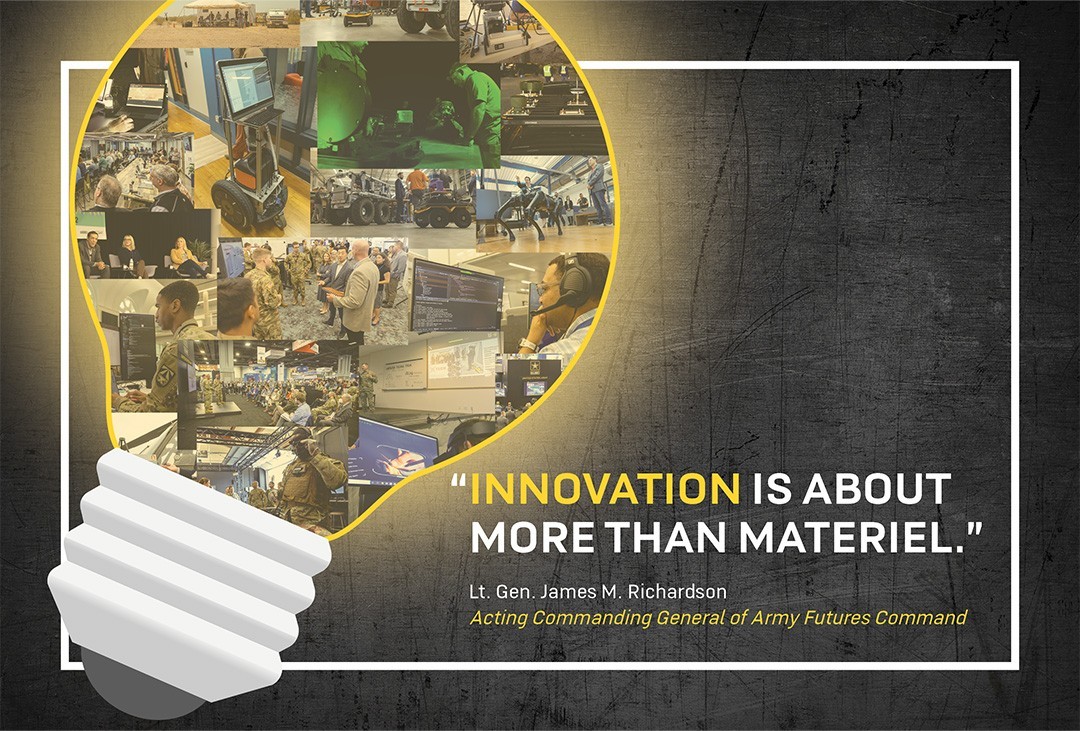Leadership transformation—what's it all about? You hear it in boardrooms and at seminars, but what does it really mean? With businesses changing fast, adapting how we lead isn't just nice to have; it's a must. A recent study shows that companies with transformational leaders are 70% more likely to beat their competition. We'll explore what leadership transformation means, look at the frameworks and models behind it, share practical tips on how to make it happen, and see how technology fits into all this. Whether you're a seasoned executive or someone who dreams of leading, knowing how to handle this change is key to success in your organization. Let's dive into this journey together!
Summary: This article describes the concept of leadership transformation, including frameworks, models, and practical strategies for implementation, as well as the role of technology in facilitating this process. It also provides answers to frequently asked questions about leadership transformation.
What Is Leadership Transformation?
Understanding Leadership Transformation
Leadership transformation transcends traditional management tactics. It involves inspiring and motivating individuals to think creatively and contribute to organizational success. This leadership style aligns personal growth with organizational goals, fostering a partnership that drives lasting change.
Transformational leaders emphasize a clear mission and vision, encouraging collective involvement to achieve long-term success and cultural shifts. This approach nurtures talent, builds robust teams, and inspires individuals to exceed expectations, propelling the organization towards sustained growth.

For instance, consider a leader in a tech company. They inspire their team with a vision for innovation, encourage creative solutions, and support each team member’s growth to maintain a competitive edge. This approach stems from understanding the leader-follower dynamic, a concept introduced by James MacGregor Burns in the 1960s and expanded by Bernard Bass. Burns emphasized motivation and ethics in leadership, while Bass developed the Full Range Leadership Model, advocating a shift from transactional to transformational leadership for enhanced outcomes.
Key Components of Leadership Transformation
Vision and Strategic Leadership
Transformational leadership is grounded in four key components, known as the Four I's:
- Idealized Influence: Leaders act as role models, earning trust and respect.
- Inspirational Motivation: Leaders provide a vision that excites everyone about common goals.
- Intellectual Stimulation: Encourages innovation and critical thinking.
- Individualized Consideration: Involves personal mentorship and support.
These elements enable leaders to enhance engagement, motivation, and positive change within their teams.

Promoting Continuous Learning
Transformational leaders empower their teams to make decisions and take calculated risks based on their insights and experience. This empowerment is vital for cultivating a culture of continuous learning and development. Leaders must commit to lifelong learning, staying abreast of industry trends, technological advancements, and new management practices. This commitment not only hones their skills but also sets a standard for their teams, fostering a culture of continuous improvement.
Embracing Adaptability and Resilience
Adaptability and resilience are crucial for transformational leaders. Swiftly adjusting to changes is essential for maintaining competitiveness. Resilient leaders navigate setbacks and challenges with a positive mindset, inspiring their teams to persevere and innovate even in adversity.
Fostering Inclusivity and Diversity
Inclusivity and diversity are fundamental to transformational leadership. Leaders should value diverse perspectives and cultivate an environment where everyone feels heard and respected. This approach not only enhances creativity and problem-solving but also demonstrates the organization’s commitment to social responsibility and equality.
Leveraging Technology for Innovation
Integrating technology and innovation into leadership practices is another vital aspect. Leaders should leverage digital tools and platforms to streamline operations, enhance communication, and drive innovation. By staying informed about technological advancements, leaders can position their organizations for success in the digital landscape.
Overall, leadership transformation is an ongoing journey requiring a commitment to personal growth, strategic vision, and a willingness to embrace change. Through this transformation, leaders can effectively guide their organizations toward a promising future.
Frameworks and Models for Effective Leadership Transformation
Key Elements of Transformational Leadership
Transformational leadership hinges on four key elements: Idealized Influence, Inspirational Motivation, Intellectual Stimulation, and Individualized Consideration. These components help leaders uplift and inspire their teams to achieve great things.
-
Idealized Influence: This means being a role model. Leaders exhibit high ethical standards and a strong commitment, embodying the values they want to see in their team. This earns them trust and respect, creating a culture of integrity. Their actions inspire others to follow suit, spreading positive behavior throughout the organization.
-
Inspirational Motivation: This is about sharing a vision that excites and motivates. Transformational leaders talk about this vision with enthusiasm, rallying everyone around common goals. This creates a shared sense of purpose and drives the team towards remarkable achievements.
-
Intellectual Stimulation: This encourages innovation by challenging the norm and promoting problem-solving. These leaders value questioning and critical thinking, empowering their teams to explore new ideas. This openness leads to innovative solutions and ongoing improvement.
-
Individualized Consideration: This involves offering personalized support and mentorship. Leaders focus on each person's needs and goals, providing tailored coaching to help them grow. By recognizing unique strengths, they help individuals reach their potential, boosting the organization's success.

Comparing Transformational Leadership with Other Styles
Transformational leadership differs from styles like transactional, situational, and change management models. Each has its own impact on how organizations operate and succeed.
-
Transformational vs. Transactional Leadership: Transformational leadership is about inspiring big changes and innovation. Transactional leadership, on the other hand, focuses on exchanges and rewards, sticking to the status quo and achieving short-term goals through clear processes.
-
Transformational vs. Situational Leadership: Situational leadership changes based on the context and the team's readiness. Transformational leadership, however, always aims to boost motivation and development, no matter the circumstances.
-
Transformational Leadership and Change Management: Approaches like Kotter’s 8-Step Process work well with transformational leadership by giving structured steps for organizational change. Lewin’s Change Model offers a simple framework (Unfreeze, Change, Refreeze) but doesn't focus on individual motivation like transformational leadership does. The McKinsey 7-S Framework looks at organizational alignment during change but needs other methods to support personal transitions, which transformational leadership provides through personalized attention.

In short, transformational leadership is unique for its focus on inspiring change and fostering growth, making it a strong framework for leadership transformation.
Practical Strategies for Leadership Transformation
Cultivating a Transformative Leadership Mindset
Leadership transformation begins with setting bold, clear goals aligned with the organization's vision. This approach not only sparks success but also encourages a long-term perspective. Leaders must embrace change by demonstrating flexibility and fostering an environment that empowers teams to drive transformation. This involves investing in team growth by identifying individual strengths and providing personalized feedback, mentoring, and resources to unlock potential and develop talent.
Improving communication is essential. Clear, frequent, and genuine communication builds trust, shares the vision, and listens to team insights and concerns.

Leaders should inspire and motivate teams with enthusiasm, lead by example, and celebrate wins to cultivate a culture of appreciation. Transformation requires clarity in vision and leadership, which can be developed through structured frameworks and workshops designed to create purpose and build high-performing workplace cultures. A leadership transformation workshop aids leaders in developing a transformative mindset and culture by guiding them through steps to create clarity, build a thriving culture, and lead with purpose.
Case Studies of Leadership Transformation
A shared vision that aligns with organizational goals and employee values is vital for effective change. Engaging employees in crafting this vision through workshops and reinforcing it through internal communications helps embed it throughout the organization. Empowering middle managers with leadership development, mentorship, and decision-making autonomy is crucial for successful change and innovation.
Tailoring communication to different groups, maintaining transparency, and demonstrating visible commitment from leadership builds trust and momentum during transformation.

Collaborating with other leaders to align visions and address discrepancies ensures a united front. A CEO who successfully led organizational change by crafting a resonant vision and empowering middle managers through training and autonomy exemplifies real-world transformational leadership in action.
Empowering Middle Managers in Leadership Transformation
Middle managers are pivotal in driving leadership transformation. Empowering them through leadership development and mentorship equips them with the skills and tools necessary to lead change effectively. Granting them more decision-making autonomy helps disseminate the leader's vision throughout the organization and encourages innovation. Providing tailored communication strategies and involving them in alignment meetings strengthens their role as change agents.
Organizations that offer regular leadership training and mentorship programs for middle managers, coupled with increased decision-making freedom, successfully empower these managers to drive transformational change. By equipping middle managers with practical skills and allowing them to make decisions, organizations can accelerate transformation and foster a culture of innovation.
Recognizing and rewarding middle managers for their efforts in transformation can motivate them and underscore the importance of their role. Recognition can take the form of formal awards or informal acknowledgments in team meetings. By showcasing the impact of middle managers, organizations can inspire others to take on leadership roles and contribute to transformational change.
In conclusion, building a transformative mindset and culture, learning from real-world examples, and empowering middle managers are all crucial strategies for enabling leadership transformation. By focusing on these areas, organizations can create a dynamic environment where leaders at all levels are ready to drive change and innovation. While practical strategies for leadership transformation emphasize mindset, culture, and communication, there's a gap in integrating technology and data analytics to support these efforts, which could enhance decision-making and measure transformation impact more effectively.
The Role of Technology in Leadership Transformation
Integrating AI with Leadership Transformation
In a world where business is always changing, tech leaders are key to making things better. They find and use solutions that make work smoother and help companies grow. By using new tech like AI, blockchain, and cloud computing, these leaders keep up with what businesses need.
These leaders mix tech skills with big-picture thinking, sparking new ideas and leading important changes. They also create a work culture that's always looking to improve, ensuring digital changes stick and truly work.
Good digital leadership means steering a company through the tricky parts of going digital. It’s about providing a clear vision and strategy while ensuring everyone’s on the same page. This alignment helps employees embrace changes and new ideas, making it easier to integrate new tech and processes. Such changes can streamline work, increase employee engagement, and prepare the workforce for the future. Consider a healthcare tech leader using AI for better patient predictions—they not only improve care but also foster a culture of ongoing improvement.

Balancing Innovation with Leadership Stability
Leading digital change well means finding the sweet spot between new, exciting tech and maintaining smooth operations. This balance supports steady growth and effective risk management. Leaders act as translators, ensuring everyone understands the tech talk. This facilitates collaboration across different parts of a company, allowing IT teams to innovate while keeping the company prepared for future challenges.
Digital leaders make informed decisions by leveraging data and analytics. This approach helps them balance new ideas with stability and wise risk management. For instance, a manufacturing leader might use automation and data to innovate without disrupting the main production line. This illustrates the importance of integrating new tech without compromising core business functions.
Maintaining a culture of learning is crucial for achieving this balance. Leaders should encourage their teams to stay updated with tech changes and provide training for new skills. By valuing learning and adaptability, companies can remain agile as technology evolves. Additionally, collaborating with diverse teams like IT, legal, and HR allows for comprehensive risk assessments and robust planning.
Clear communication is essential too. Leaders need to articulate the vision and benefits of tech changes to all stakeholders, addressing concerns and building trust. Open communication aligns the company’s goals with tech strategies, ensuring new initiatives support long-term stability. This way, companies can navigate digital changes effectively, leading to steady growth and maintaining a competitive edge in the digital landscape.
Learn more about how technology leaders can transform industries through innovative leadership.
Explore the role of leadership in driving digital transformation.
Discover digital leadership strategies.
FAQs
Applying Transformational Leadership in Rapidly Changing Industries
In fast-moving fields like tech and finance, transformational leadership truly excels. It's centered on inspiring and motivating employees to think creatively and discover new methods to propel the company forward. Leaders in these sectors need to be flexible and future-focused to navigate the twists and turns of their industries. They empower employees to make decisions, ignite creativity, and cultivate an environment where everyone feels driven to contribute to the company's goals.

This adaptability is crucial for swiftly responding to changes. Transformational leadership emphasizes being adaptable, personal growth, and unity in achieving shared goals. This approach facilitates long-term growth and change in fast-paced sectors. Leaders provide a vivid vision of the future and motivate teams to work towards common objectives, guiding them through uncertainty with a clear direction. By tapping into what truly motivates team members and linking their personal growth to the organization's success, transformational leadership builds cultures that can tackle future challenges.
Consider a tech company facing rapid market changes. They might implement transformational leadership by encouraging teams to continually innovate. Leaders enable employees to make strategic decisions and ensure everyone works towards a clear vision of the industry's future, keeping them competitive and engaged.
Challenges of Implementing Transformational Leadership
While transformational leadership is effective, it does present challenges. A significant hurdle is inspiring and motivating employees beyond simple rewards. This can be difficult if leaders lack vision or communication skills. Aligning what drives each employee with the organization's mission requires personalized support and mentoring, which can be resource-intensive and challenging to manage.
Leaders must take calculated risks based on team insights and values, introducing uncertainty and potential resistance to change. Building a culture of innovation and sustained motivation demands continuous effort and can be daunting in environments with traditional management styles. Transitioning from conventional management to transformational leadership involves acquiring new skills, like inspiring intrinsic motivation and driving long-term cultural change, which can be a steep learning curve for some.

Consider an established manufacturing firm struggling with this shift. Middle managers accustomed to transactional styles focused on quick results may find it difficult to transition to a vision-driven, motivational approach that fosters innovation and personal growth.
Comparing Transformational Leadership to Other Styles
Transformational leadership stands out by focusing on lasting change, fostering innovation, and building teams that consistently exceed expectations. Unlike transactional leadership, which revolves around exchanging work for rewards, transformational leadership transcends traditional management by creating self-sustaining cultures of excellence. Transformational leaders are role models, earning trust and respect (idealized influence), providing a compelling vision (inspirational motivation), encouraging innovation (intellectual stimulation), and offering personalized support (individualized consideration). These elements help leaders elevate followers to higher levels of motivation and morality.
While transactional leadership achieves steady performance through monitoring and rewards, transformational leadership aligns personal growth with organizational success, tapping into intrinsic motivation rather than just external incentives. It emphasizes long-term cultural change and adaptability, unlike other styles that might focus on short-term goals.
For instance, a CEO practicing transformational leadership might inspire their team with a compelling vision and encourage creative problem-solving. In contrast, a transactional leader might focus on hitting quarterly targets and enforcing policies through rewards and penalties. Transformational leadership differs from laissez-faire leadership, which is more hands-off, by focusing on active engagement, inspiration, and a long-term vision rather than compliance or a lack of involvement.
In conclusion, transformational leadership is a powerful approach that can drive significant change and innovation, especially in rapidly changing industries. However, it requires a deep understanding of both the organization's needs and what drives team members, alongside the ability to inspire beyond traditional rewards. By embracing this style, organizations can foster a culture of innovation and adaptability, setting themselves up for long-term success in an ever-changing world.
Further Reading: